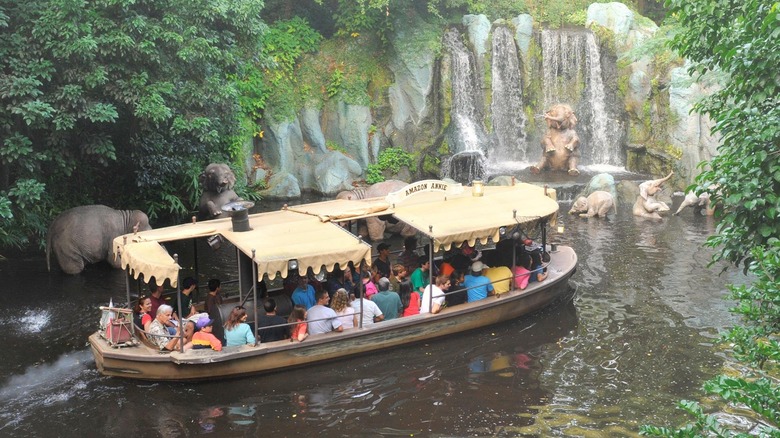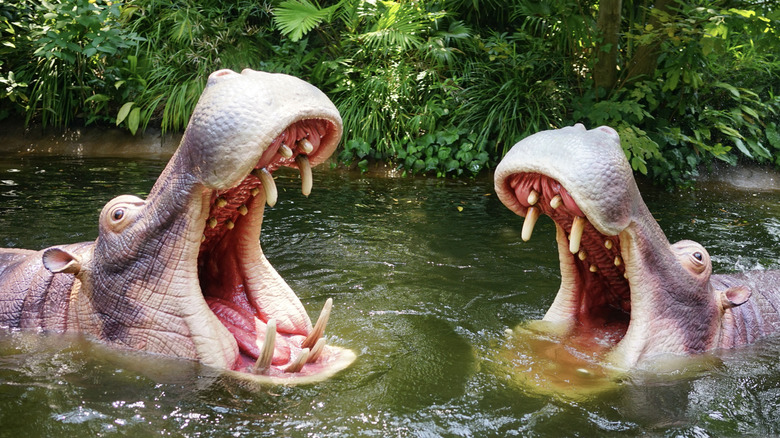The Unexpected Reason Disney World's Iconic Jungle Cruise Ride Uses Dyed Water
The Jungle Cruise is a classic theme park ride that's been at Disney World since the beginning, and yet we're still learning new things about it. One thing you may not realize when you board the ride in the Magic Kingdom is that its boats — old tramp steamers with alliterative names like the Congo Queen and Nile Nellie — are following a track underwater. This helps each boat maintain the right timing so that the ride is the same length for every guest. As the skipper delivers their jokes, they're not really steering the boat any more than the Haunted Mansion's ghosts are steering its automated Doom Buggies.
It's easy to miss that as you explore the rivers of the world in Adventureland and get distracted by the sight of animatronic animals on the Jungle Cruise. Unlike the water in "It's a Small World," which is clear enough that you can see all the wishing coins people have thrown in, the water in the Jungle Cruise is also dyed a murky green. There's a very specific reason for that, and it goes beyond simply upholding the aesthetic of a jungle river.
A Jungle Cruise skipper told AllEars.net that a rust-based dye is added to the river to conceal what's underwater and preserve the illusion for guests. It wouldn't do to have people peering down at a boat track in the "jungle," focusing on the inherent fakery of their surroundings when they're supposed to be having escapist fun. Oddly enough, when the dye gets on clothes or isn't mixed properly, it's known to turn fabric purple and the river pink instead of green.
The dye also helps hide the animatronics
Schweitzer Falls, the waterfall that provides skippers with their "back side of water" joke on the Jungle Cruise, acts as a mixer, churning the dye enough to keep the river looking green. In addition to hiding the boat track, this helps conceal the animatronic parts of half-submerged river animals. Jungle Cruise guests have become well-accustomed to seeing the hippos in the water baring their teeth, and elephants bathing in a pool beside a flowing cascade. At both Disney World and Disneyland, those animals are often missing feet or the lower part of their bodies. If you could see through the water (or see the river drained), it would expose their inner workings — how they're mounted on frames and discolored below the water line.
Having mechanically-controlled animals in green water ensures that they're always ready for showtime, though it's different from what Walt Disney first envisioned for the Jungle Cruise. He wanted a ride with live animals, like Animal Kingdom's popular Kilimanjaro Safari. Some of this is explained in the Jungle Cruise episode of the Disney+ series, "Behind the Attraction," which delves into the ride's history.
The original Jungle Cruise — an opening-day attraction at Disneyland in 1955 — was built on top of an orange grove in California, where there are plenty of other things to do in Anaheim. Its animatronics came together with assistance from the special effects artists behind the giant squid in Disney's 1954 live-action "20,000 Leagues Under the Sea" movie. Disney later rolled out similar versions of the ride across three other parks worldwide, beginning with the Magic Kingdom in 1971.

